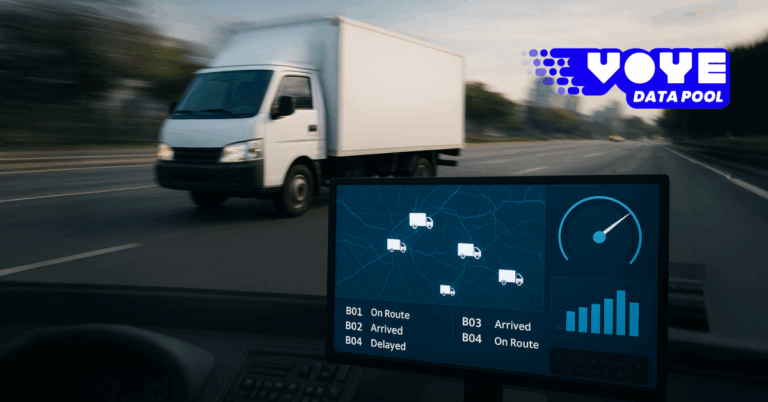ESG Angle: How Smarter Mobility Lowers Enterprise Carbon Footprints
Enterprises worldwide are rethinking their mobility strategies to align with ESG goals. Smart mobility solutions — powered by digital connectivity and data insights — can significantly reduce carbon footprints while improving operational efficiency. This article explores how smarter travel and fleet management drive sustainability gains at scale.

Sustainability has moved from the sidelines to the center of enterprise strategy. Investors, regulators, employees, and customers now expect businesses to demonstrate measurable progress toward reducing their environmental impact. Among the many areas under scrutiny, mobility—the way employees travel, connect, and collaborate globally—emerges as a surprising but critical lever in shaping corporate carbon footprints.
Traditional approaches to enterprise mobility are carbon-intensive, from the millions of plastic SIM cards manufactured each year to the emissions tied to global shipping, business travel, and redundant telecom infrastructure. As enterprises commit to ambitious ESG (Environmental, Social, and Governance) targets, they are beginning to ask: how can smarter mobility support both operational efficiency and sustainability?
The answer lies in embracing digital-first connectivity solutions such as eSIMs, enterprise data pools, and virtual collaboration ecosystems. These technologies not only cut costs and improve employee experience but also align directly with ESG goals by eliminating waste, reducing emissions, and simplifying governance reporting.
The Hidden Carbon Cost of Enterprise Mobility
When most organizations think of carbon emissions, they picture power plants, fleets of vehicles, or manufacturing processes. Yet, everyday mobility practices carry their own environmental burden.
Business travel is one of the biggest culprits. Air travel alone accounts for a significant percentage of Scope 3 emissions for multinational companies. Even regional trips, taxis, and rental cars add up quickly in carbon terms. The push for in-person meetings often outweighs the sustainability trade-off, leaving companies to reconcile the gap between productivity and ESG commitments.
Less visible but equally impactful is the reliance on physical SIM cards and telecom logistics. Each SIM card involves plastic production, packaging, shipping, and eventual disposal. Multiplied across thousands of employees in global enterprises, the environmental cost of this outdated model is staggering. Billions of SIM cards are produced annually worldwide, equating to tens of thousands of tons of plastic waste and additional CO2 emissions from transport and distribution.
Finally, there are the indirect energy costs tied to legacy connectivity systems. Redundant infrastructure, excess hardware, and fragmented mobile subscriptions not only increase operating expenses but also inflate Scope 2 emissions from data center reliance and energy use.
What Smarter Mobility Really Means
Smarter mobility is not simply about giving employees the freedom to work from anywhere. It is about rethinking the entire mobility ecosystem through the lens of ESG. It focuses on minimizing physical waste, reducing energy dependency, and leveraging digital tools to replace carbon-heavy practices.
At its core, smarter mobility includes:
- eSIM adoption: Replacing physical SIM cards with digital profiles that can be activated instantly. No plastic, no shipping, no waste.
- Enterprise data pools: Centralized platforms that let businesses assign and manage mobile data across hundreds or thousands of employees with a few clicks.
- Virtual collaboration tools: Secure platforms that reduce the need for constant air travel by making global collaboration seamless.
- Data-driven optimization: Using analytics to monitor connectivity usage and identify areas where efficiency improvements lead directly to carbon savings.
By shifting from a hardware-driven to a software-driven model of mobility, enterprises not only improve flexibility and resilience but also cut emissions across the board.

Seamless eSIM Connectivity for Enterprises
Activate, manage, and scale eSIMs with ease.
Why eSIMs Are an ESG Game Changer
Among the many innovations reshaping enterprise mobility, eSIM technology stands out as a sustainability hero. The environmental advantages are immediate:
- Plastic elimination: No need for billions of plastic cards annually.
- Reduced shipping emissions: eSIMs are downloaded, not shipped.
- No packaging waste: Eliminates the paper, ink, and plastic wrappers used in distribution.
- Extended device lifespan: eSIMs simplify device provisioning, reducing the need for multiple SIM-dependent devices.
For global enterprises, the switch from physical SIMs to eSIMs also supports governance and reporting. Usage data can be tracked in real-time, emissions savings can be quantified, and sustainability metrics can be embedded into annual ESG reports.
Solutions like Voye Data Pool make this transition seamless. With one secure platform, companies can assign eSIMs in bulk, manage global connectivity centrally, and release mobile data instantly to employees wherever they are. This eliminates courier shipments, redundant subscriptions, and hours of manual provisioning—all while cutting down on carbon impact.
Mobility’s Social and Governance Benefits
ESG is not only about the environment. Smarter mobility also contributes to the social and governance dimensions of corporate responsibility.
On the social side, enabling reliable digital connectivity reduces stress for employees traveling or working remotely. It ensures equitable access to resources regardless of location, supporting inclusivity for distributed teams. Hybrid work policies also become more effective when mobility is simplified, improving employee well-being and work-life balance.
From a governance perspective, centralized mobility management offers transparency and control. Enterprises can enforce sustainability policies, track compliance across departments, and demonstrate concrete action in ESG disclosures. By quantifying the carbon savings from smarter mobility, organizations build credibility with investors, regulators, and employees alike.
The Business Case: Cutting Carbon and Costs
One of the most powerful aspects of smarter mobility is that it doesn’t just serve ESG goals—it also strengthens the bottom line. Eliminating physical SIM cards reduces material costs, logistics expenses, and administrative overhead. Centralizing mobile data management prevents waste from unused subscriptions. Reducing travel cuts not only emissions but also significant T&E (travel and expense) spend.
Consider the example of a global consulting firm with tens of thousands of employees. By transitioning from physical SIM kits to eSIMs, they eliminated over 50,000 pieces of plastic annually, reduced courier-related emissions by dozens of tons of CO2 equivalent, and cut operational costs by nearly a third. Another multinational reduced travel by 35% through reliable digital connectivity, saving millions in airfare while lowering their reported carbon footprint.
In both cases, sustainability and profitability aligned perfectly—a core driver of why ESG initiatives increasingly influence enterprise decision-making.
Practical Steps for Enterprises
For organizations looking to integrate smarter mobility into their ESG strategies, the roadmap begins with a clear framework:
- Audit current mobility practices: Map emissions tied to SIM cards, shipping, and employee travel.
- Transition to digital connectivity: Begin phasing out physical SIMs in favor of eSIM solutions.
- Adopt centralized platforms: Implement enterprise data pools for full visibility and efficiency.
- Encourage hybrid and virtual collaboration: Reduce unnecessary flights by investing in secure, reliable digital tools.
- Report and communicate progress: Incorporate mobility savings into ESG disclosures to demonstrate measurable results.
Each of these steps positions mobility not just as a cost center but as a strategic lever for sustainability.
Looking Ahead: Mobility as a Sustainability Differentiator
The future of enterprise mobility is deeply tied to the future of ESG. As 5G, IoT, and AI converge, companies will gain even more tools to optimize mobility for both performance and sustainability. Predictive analytics will suggest the lowest-carbon travel routes, IoT sensors will reduce fuel use in fleets, and blockchain may provide verifiable carbon tracking for ESG audits.
What will set leaders apart is how quickly they embrace the digital transition. Enterprises that act now—by eliminating plastic SIMs, centralizing connectivity, and reducing business travel—will not only meet their ESG goals but also enjoy reputational and financial advantages.
Mobility has always been about enabling progress. In today’s ESG-driven world, smarter mobility ensures that progress is sustainable. With solutions like Voye Data Pool, enterprises can power their global teams efficiently while making measurable strides toward a lower-carbon future.
Conclusion
The ESG angle of enterprise mobility is clear: digital solutions reduce environmental waste, strengthen social equity, and enhance governance transparency. By eliminating physical SIM cards, minimizing travel, and centralizing mobile data, companies can significantly lower their carbon footprints while improving efficiency.
For enterprises, this is more than a compliance exercise—it’s a competitive advantage. Smarter mobility is the bridge between sustainability and business growth, and the time to cross it is now.



 7 min read
7 min read





